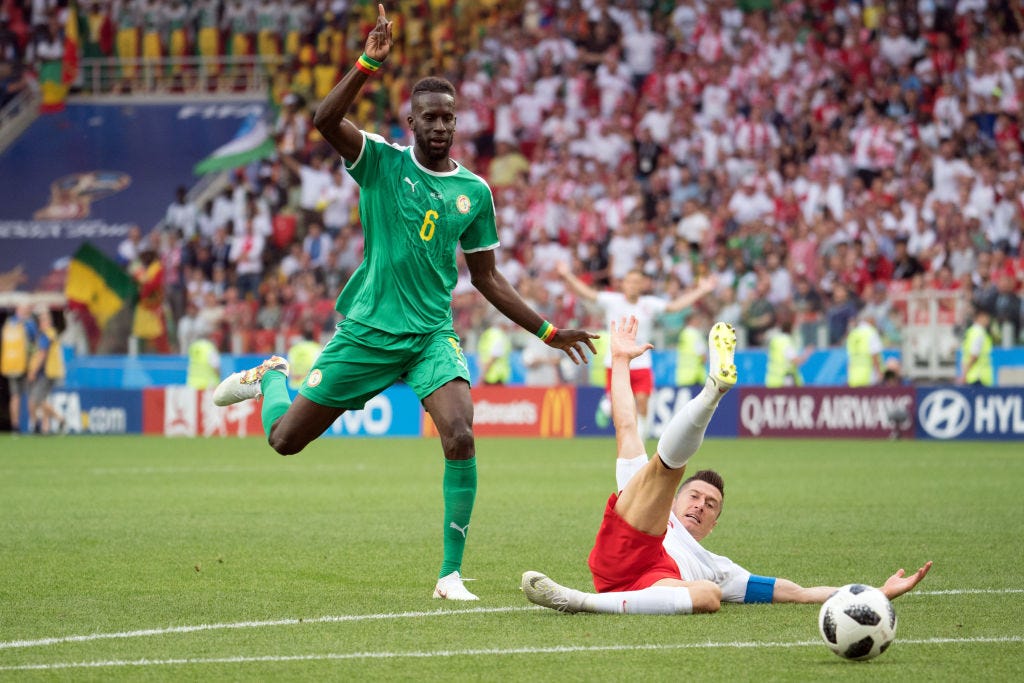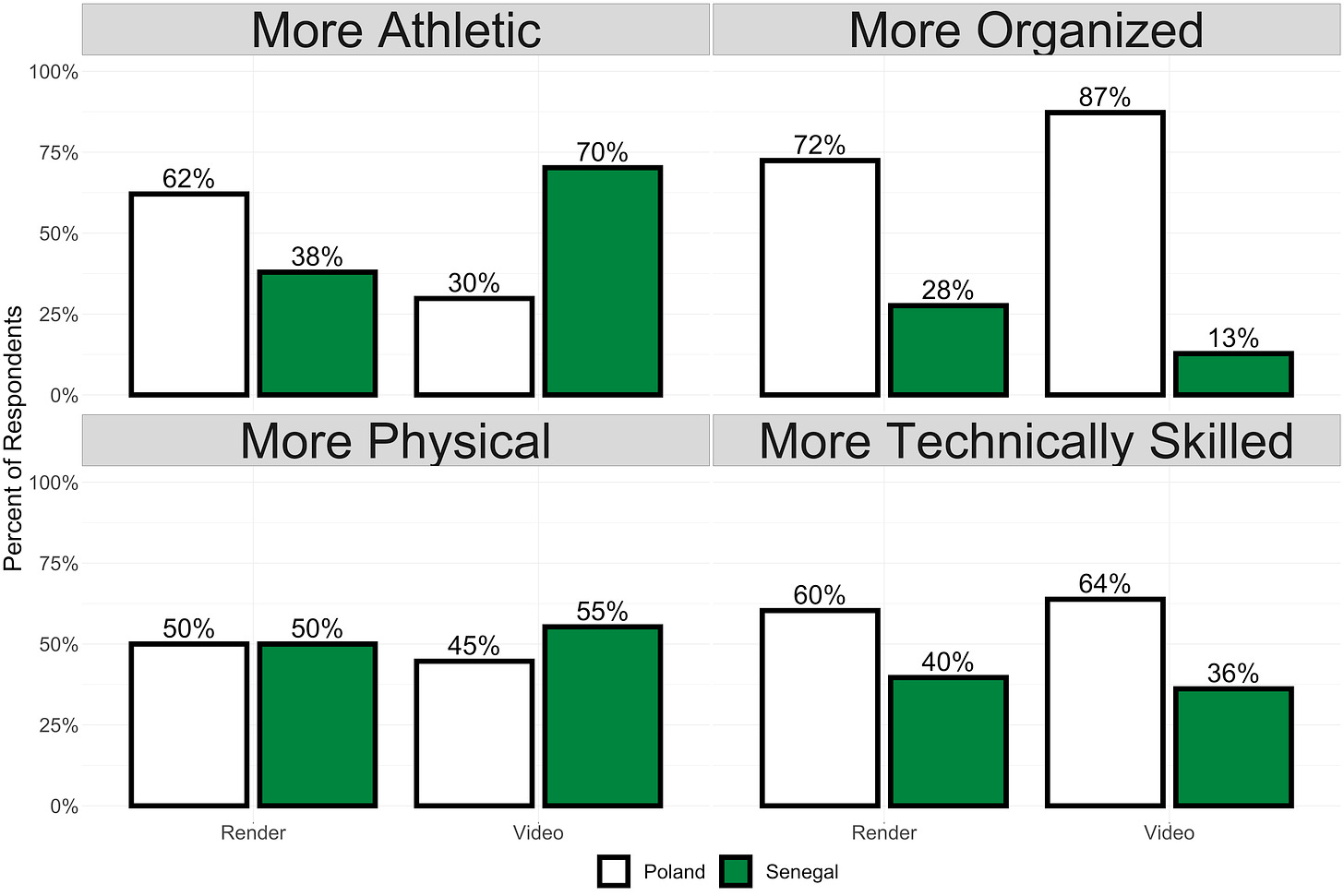Soccer Viewers Are Exactly as Biased as You Thought They Were
Some remarkable new research shows just how much our preconceived notions on race and gender skew our perception of the game.

Last year, a study commissioned by the Professional Footballers’ Association confirmed a long-held suspicion that racial bias is pervasive and profound in the way soccer commentators describe the games they cover.
According to the study, which analyzed more than 2,000 statements by commentators made over the course of 80 games from Europe’s four biggest leagues in the 2019-20 season, announcers overwhelmingly spoke of Black and white players in lazy stereotypes. The Black players were disproportionately praised for athleticism while the white ones were much more likely to be given credit for their intelligence, leadership, versatility and work ethic. Among Black players, standout performances were a matter of good form while their white counterparts had excelled through their effort and guile—so went the explanation from the announcers.
Now, a remarkable new study done on this side of the Atlantic offers further context to both racial bias and gender bias in soccer. The problem, it turns out, isn’t just in the way the games are announced and analyzed. The issue is with the way all observers view the game.
Sam Gregory is the director of analytics at Inter Miami and a part-time master’s student at Victoria University in Australia, where he studies the intersections of sports analytics and sports science. But before that, he worked for Sportlogiq, a Canadian software company that collects tracking data in sports games with cameras surrounding the field, capturing every player’s movement in a game.
That technology grew so sophisticated that it could break those movements down by joint—knees, ankles, hips, elbows, etc. This, then, allowed for recreating entire games through 2D player skeletons, little stick figures who played a game exactly as it had happened in real life.
That gave Gregory and Devin Pleuler, director of analytics for Toronto FC, an idea. If these 2D skeletons anonymized the participants of a game, could your average viewer tell the difference between men’s and women’s soccer? Or a team of Black players from one made up of white ones?
Would all of the stereotypes hold up when gender and race were taken out of the equation?
In their not-yet published paper, Pace and Power: Removing unconscious bias from soccer broadcasts, Gregory and Pleuler—along with co-authors Daniel Daly-Grafstein, Yang Liu and Paul Marchwica—confirmed that fans watching a soccer game made color- and gender-blind, as it were, lost those assumptions as well.
“We find that when viewers are able to identify player race they are much more likely to attribute athletic or physical characteristics to black players,” the authors write. “We also find evidence that when viewers can tell they are watching a women’s game they may identify it as of a lower quality than when they are watching the recreation.”
The study’s 105 participants were split into two groups. One of them, the control group, watched the actual broadcast of a 2018 World Cup game between all-white Poland and all-Black Senegal. The other group watched the 2D skeleton reproduction.
In the control group, watching the original TV broadcast, 70 percent of respondents through the Senegalese team was more athletic. In the reproduction group, 62 percent of respondents said that they thought Poland was the more athletic team.
“We found pretty clear evidence that in watching the exact same clip, when viewers could see these players’ defining characteristics, they were much more likely to say a Black team was more athletic,” Gregory says. “If they could see the exact same clip with these physical identifying characteristics removed, the trend was completely flipped. That was a statistically significant finding.”
In the second part of the study, participants were shown the 2019 championship game in the National Women’s Soccer League between the North Carolina Courage and the Chicago Red Stars. Then they were shown a League 2 match between Crawley Town and Swindon Town in England’s fourth division. Both games ended 4-0.
Among fans who were shown the 2D skeleton reproductions, 59 percent of respondents thought the women’s game was of higher quality. Among those shown the actual broadcast, 57 percent thought the men’s game was of higher quality.
Those findings weren’t statistically significant, according to Gregory. But the raw totals still suggest that viewers unaware of the players’ gender were much likelier to rate the women’s game over the men’s one than those watching the original footage.
This represents an interesting counterpoint to the argument made against equal pay between the genders in soccer that posits that the women’s game is less exciting and therefore drives less revenue. (In actuality, you cannot make a revenue comparison given that the men’s game has a century-long head start on the women—women’s soccer was effectively banned in England until 1971—and continues to reap the benefit of far more investment.)
“One of the arguments used to support the gender pay gap is people won’t watch women’s soccer because they see it as being of lower quality than men’s soccer,” says Gregory. “And that’s the idea we’re trying to challenge here. It’s not really about quality, it’s about perception of quality.”
The paper speaks to the corrosive and sometimes far-reaching effects of these preconceived notions. “Decisions based on these analyses can have serious detrimental effects including but not limited to: unfair decisions made by front offices and referees; perpetuation of racist or sexist stereotypes by commentators or pundits; and inefficient allocation of media coverage or resources,” the authors write. “Wider societal effects that reach beyond the sport itself are also exacerbated by these biased analyses.”
There is some data to back up this point now, a useful tool in the fight against racism and sexism in soccer.













This is amazing research. I've suspected as much for a while, but didn't realize someone had found a way to at least get an approximation of a gender/race neutral view.